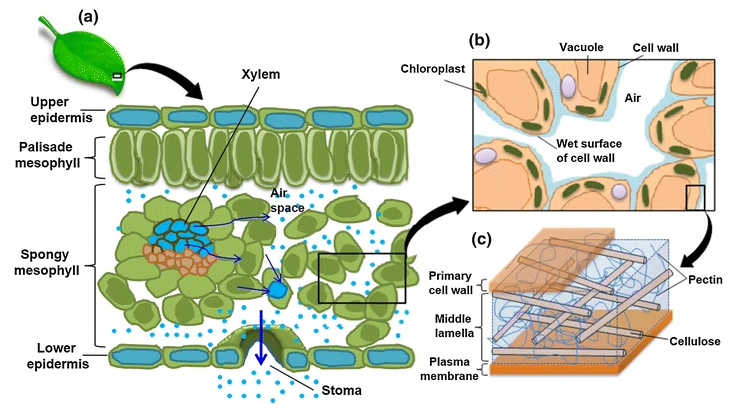Water transport in porous hydrogel structures analogous to leaf mesophyll cells
페이지 정보

조회 96회 작성일 25-05-08 11:05
본문
| Journal | Microfluidics and Nanofluidics |
|---|---|
| Name | Sang Joon Lee, Hyejeong Kim, and Sungsook Ahn |
| Year | 2015 |

Mass transport in porous materials is widespread in nature, and its usefulness attracts large attention for engineering applications. Plant leaves have nano-/microporous structures to pull water from root to the tip of leaves, and they finally release water to the air. In this hydraulic phenomenon called transpiration, plant leaves provide the main driving force for water transport in plants without any mechanical pump system. The morphological structure of plant leaves has been optimized through a long history of evolution to adapt to the environmental changes. In this aspect, we focus on the morphological features of plant leaves, which probably enhance leaf transpiration. The tissue organization in the hydraulic pathways inside the leaves for transpiration was investigated in this study. Inspired by the morphological structure of mesophyll cells in a plant, two analogous models were fabricated using hydrogel to study the effect of pore size on water transport. One model had nanoporous unitary structure, and the other had nano-/microporous hierarchical structure. As a result, the hydrogel model with nano-/microporous hierarchical structure induced higher evaporation and greater swelling ratio, compared with the model with nanoporous unitary structure. X-ray images of the water transport in the hydrogel models show that the porous structures of mesophyll cells can generate the Laplace pressure at the water–air interface in the air spaces.